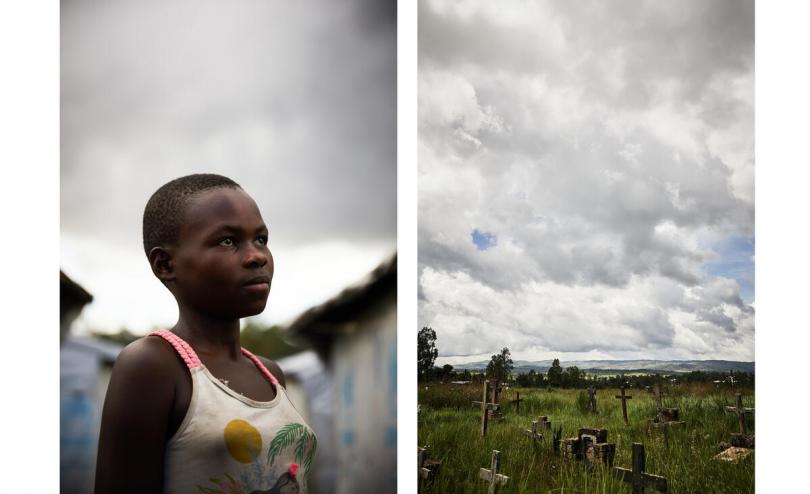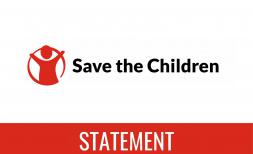NEW REPORT: On average 25 children killed or injured in conflicts every day for the past decade

Save the Children calls for states to endorse declaration on avoiding use of explosive weapons in populated areas.
A total of 93,236 children[i] have been killed or maimed in conflicts in the last 10 years, it was revealed today. That means 25 children, the equivalent of a classroom full of pupils, have been killed or injured[ii] on average every day.
Many were victims of airstrikes, shelling, landmines and other explosive weapons used in populated areas where families have been ripped apart and tens of thousands of children left dead or scarred for life.
Last year alone, more than a third of the verified child casualties were caused by explosive weapons - with the number dramatically higher in Afghanistan, Iraq and Syria.
The figures are disclosed today in a Save the Children report, Killed and Maimed: A Generation Of Violations Against Children In Conflict.
The report also reveals that in 2019[iii] some 426 million children lived in a conflict-affected area – a slight increase on the year before. Around 160 million children lived in a high-intensity conflict zone[iv], also an increase compared to 2018.
The impact of explosive weapons on children is complex, Save the Children said, robbing families of their hopes and their ability to access vital services, and often profoundly altering the direction of a child’s life.
A 15-year-old boy who lives in North Afghanistan with his grandfather. He found an explosive item in front of his school and brought it home. When he tried to open it, the item exploded, wounding him and his cousin. After days in a clinic, he found he lost his hand.
"When I realised my hand was amputated, I got upset. I became sad, wishing I hadn’t picked up that round and brought it home so that my hand would not have been amputated. [In the hospital] I saw many others whose legs had been amputated, and who had lost their eyes."
“After the incident, I was terrified. Sometimes I would have nightmares and would tell my brother to come. I could not sleep alone in a room. When I go somewhere, I would like to be confident so that when I talk, it does not come to my mind that I do not have a hand.”
The report launched by Save the Children today, on World Children’s Day, is the fourth in a series entitled Stop the War on Children. It shines a spotlight on six grave violations[v] committed against children in conflict zones (see footnote for details)
Over the past decade, more than 200,000 such violations were verified. The record was sadly broken in 2019, which saw 26,233 grave violations committed. The actual number is likely to be even higher as some violations, notably sexual abuse, are grossly underreported.
Inger Ashing, the CEO of Save the Children, said: “Behind the stark numbers are countless stories of the child victims of war. Many are casualties of people blatantly disregarding international laws and standards, and governments turning a blind eye. Yet several countries have made a conscious decision to keep selling arms to warring parties even where it was clear they were being used against children. This cannot go on.
“This weekend, the world’s richest and most powerful leaders gather in Saudi Arabia for the G20 summit in Riyadh. A day’s drive away, millions of vulnerable children in Yemen don’t know where their next meal will come from or if they will survive the next airstrike or artillery shelling. This is an opportunity for world leaders to use their influence and their voice to make the right choice, and to stop the war on children.”
Even during the COVID-19 pandemic, when the focus should be on fighting the virus, warring parties continue killing and maiming children, Save the Children said. The UN called for a global ceasefire in July, endorsed by 170 countries, but since then 177 of children have been killed and maimed in Yemen[vi], dozens have been killed or badly injured in Afghanistan, the violence in DRC has spiked, and children in Myanmar are frequent victims.
Earlier this year, the Saudi and Emirati-led coalition was taken off the UN’s ‘list of shame’, which calls out perpetrators of grave violations against children. The coalition was delisted even though children in Yemen are still bombed almost daily, Save the Children said.
Ms Ashing continued: “Never in human history have we been more aware of child rights violations – bombings are verified, recruitment is documented and we see children starving on TV as they are denied aid. We have the means to prevent children from being harmed but we continue to see unbelievable violations, year on year. It is as if the world has stopped caring.”
The report Killed and Maimed also outlined that, in 2019[vii]:
- The most dangerous countries for children in conflict are Syria, Somalia, Afghanistan, Yemen, Nigeria, DRC, Mali, CAR, Iraq, South Sudan and Sudan;
- More than 3 million children were living in an area where violence had been raging for 18 years or more;
- the number of children recruited by armed forces rose by 639 from 2018, to 7,845 in 2019. Over 3,100 children were found to have been recruited in the Democratic Republic of Congo alone;
- Over 4,400 times humanitarian organisations were denied access to children – six times as often as in 2018.
To curb the disastrous impacts of explosive weapons on children, Save the Children is urgently calling on states to curb the use of the weapons most harmful to children, limit the sale of such weapons if they might be used to commit or facilitate serious violations of international law, and hold those who disregard international laws and standards to account. Save the Children is also calling for states to support an Irish-led political declaration aimed at curbing the use of explosive weapons in populated areas.
In addition, the organisation is urging governments to ensure child protection is fully funded in humanitarian responses, including mental health support for children and their families.
In the week the report was launched, Save the Children has also released its centenary photographic book I Am Alive, with the gripping stories and photos of people who survived some of the most atrocious wars over the past 100 years – one person for every decade. The book documents the stories of these eleven child survivors—from a 107-year-old who lived through the First World War to a 15-day-old Rohingya girl born in a refugee camp, all of whom were touched by the work of Save the Children during or after a conflict.
*names changed to protect identity
For more information:
- Rik Goverde, rik.goverde@savethechildren.org / +44 (0) 7732 602 301
- During out of office hours: Media@savethechildren.org.uk / +44 7831 650 409
[i] Data covers the ten-year period between 2010 and 2019 inclusive. The total number of children killed or maimed in that period (93,236) divided by 3,650 days is 25.54. When looking back over the past 15 years, the number of children killed or injured in conflict jumps to more than 100,000.
[ii] The average classroom size in England and Wales is 27.1 pupils. More here.
[iii] The latest year for which data is available,
[iv] High intensity conflict zones are areas with 1,000 or more battle deaths per year.
[v] The six grave violations are: (1) killing and maiming; (2) recruitment or use of child soldiers; (3) sexual violence; (4) attacks on schools and hospitals; (5) abduction of children; (6) denial of humanitarian aid. More here.
[vi] According to the Civilian Impact Monitoring Project (CIMP), an open source database that monitors civilian casualties in Yemen, 62 children were killed in the conflict in Yemen between 1 July and October 31st. Some 115 children were injured.
[vii] Based on the most recently available UN data




